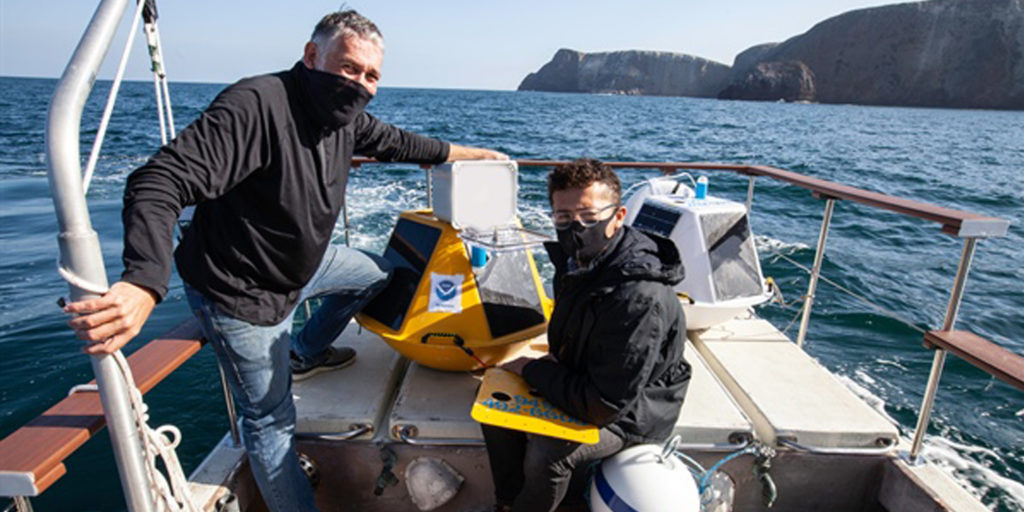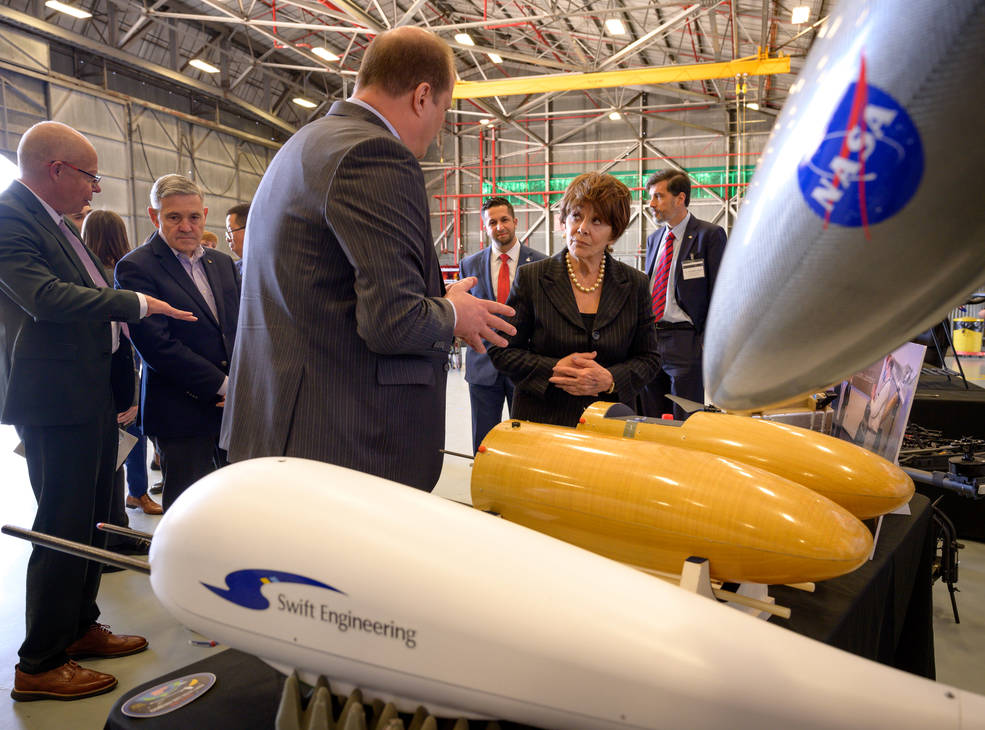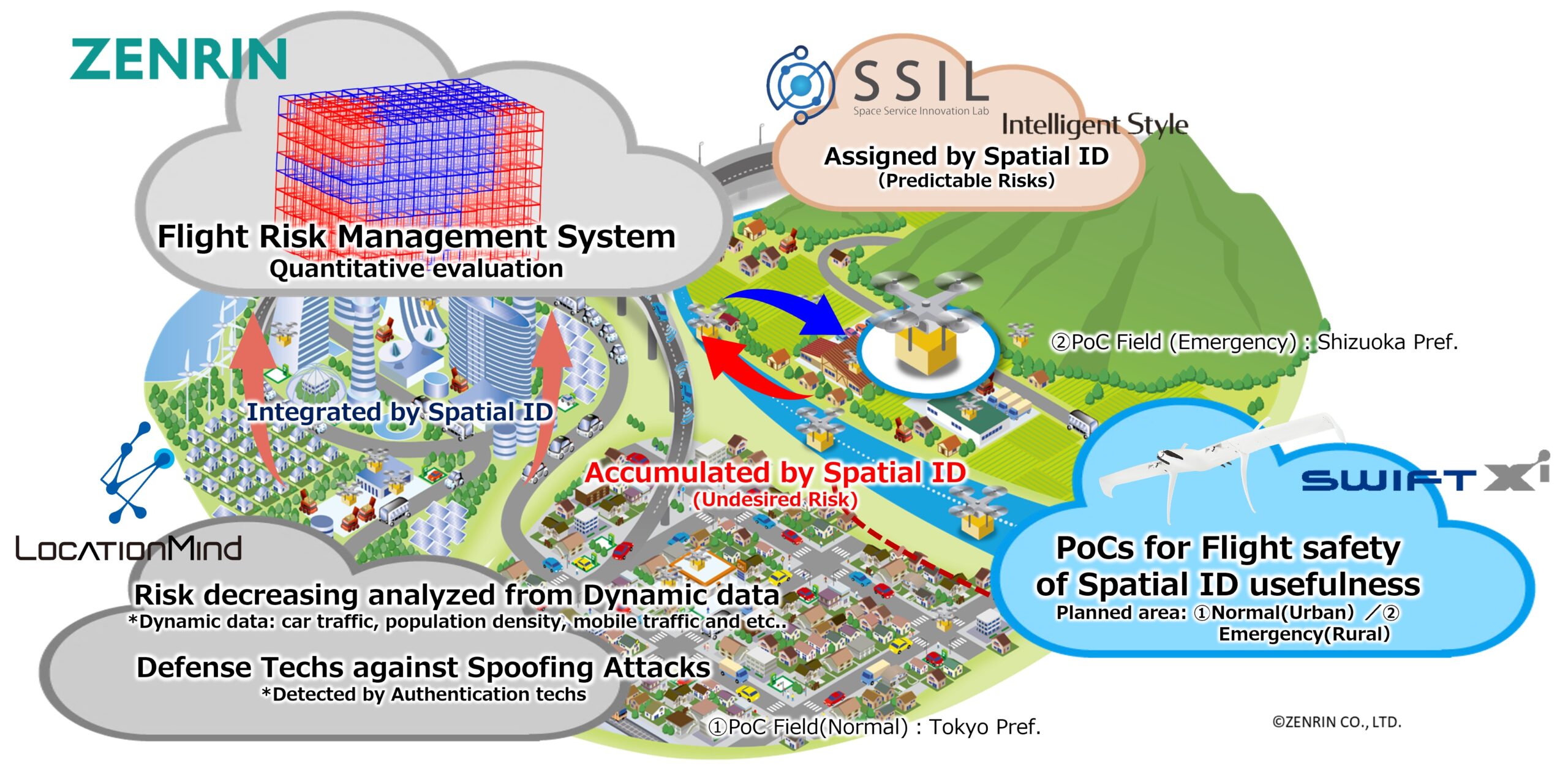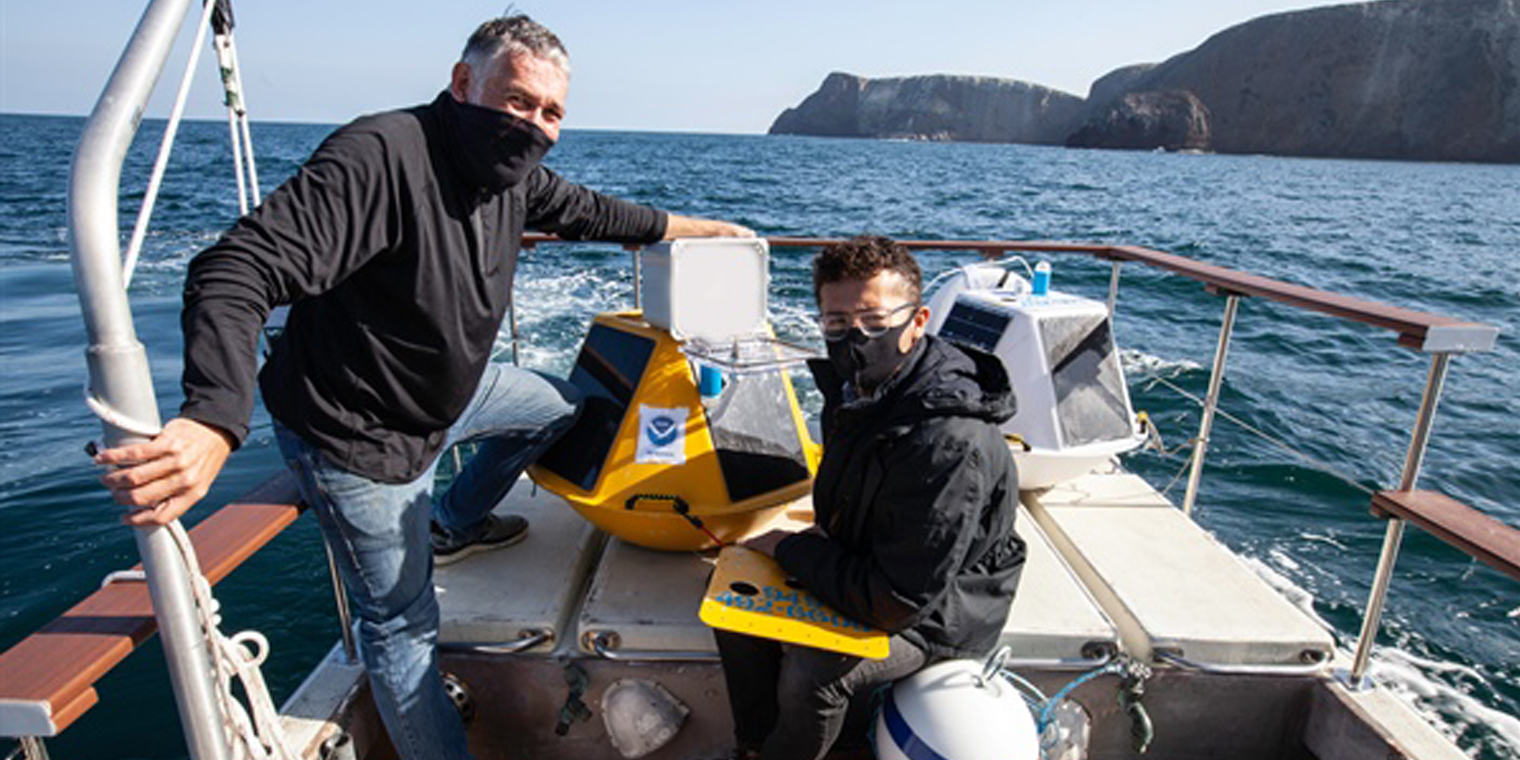Graeme Rae (Left) and Costas Soler (Right) deploying KELP buoys at the Channel Islands Marine Preserve
Swift Engineering, originally a race-car design company, is a growing engineering company in the unmanned air and underwater vehicle space.
They were founded in San Clemente, California and have become a major player in crafting autonomous systems for projects nationally and internationally. In fact, Swift has developed technologies that have been used by the National Oceanic and Atmospheric Administration (NOAA), the National Aeronautics and Space Administration (NASA), Air Force Research Laboratory (AFRL), Defense Advanced Research Projects Agency (DARPA), and the Department of Defense (DOD).
They have an expansive range of products and staff with strong backgrounds in unmanned systems, sensors, and propulsion technologies. Swift’s expertise in sensing technologies first caught the attention of NOAA, who tasked them with creating an affordable marine and coastal water quality monitor. The water monitoring system device is called KELP, which can collect and display data from the surface of the ocean. KELP is a robotic buoy that was created with disaster response and predictive analysis in mind with a bigger picture of creating crowd-sourced data for the world to access.
KELP is unique in that its capabilities are broad, continuously expanding, and provides services at a competitive price point. The typical sensors on the buoy measure water temperature, salinity, pH, dissolved oxygen, and more. The KELP buoy can communicate via 4G/5G cellular data, Wi-Fi, long-range radio, or satellite. The system is capable of running indefinitely on solar power, allowing it to act as a passive monitoring device, and if given the right set of conditions, can alert owners of important ocean or water events.
Graeme Rae, lead engineer on the KELP project explains KELP’s prototyping phase has recently ended, and now the Swift team is working on demonstrating the accuracy of their sensing technologies. As time goes on, Swift Engineering hopes to draw attention to their easy-to-alter device, designed to be repurposed for any and all uses. The KELP system can be engineered to rapidly add in new capabilities and software and be sent back to sea for their owners to use. KELP is not on the market yet, but Swift aims to start marketing KELP within the next six months to those interested in its capabilities.
Another major ocean and water sensing project in the works at Swift is Swift021, also known as the Gryphon, an unmanned aircraft system (UAS). Phil Mengden, Swift Engineering’s Technical Sales Manager, describes the capabilities for land and sea operations including conducting maritime takeoffs and landing ISR missions with flight times exceeding 1.5 hours. Swift Tactical Systems, a subsidiary of Swift Engineering, commercializes, maintains, operates, and trains customers on the products developed by Swift. Swift021 being utilized in the Caribbean for various intelligence, surveillance, reconnaissance (ISR), and situational awareness (SA) operations. The project is set to be sold internationally for things such as illegal immigration, illegal fishing, air quality sensing, search and rescue (SAR), and tracking wildlife.
The future of Swift Engineering is bright, and the applications and possibilities of their technologies are endless
Source: TMA Bluetech





